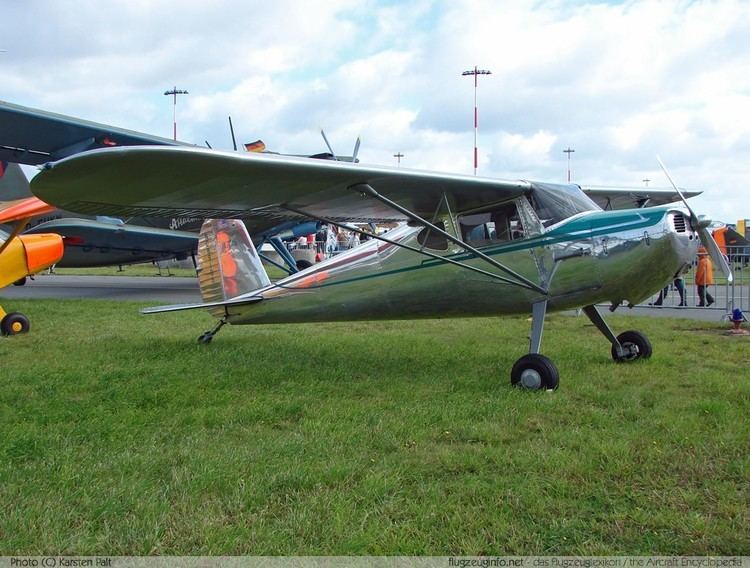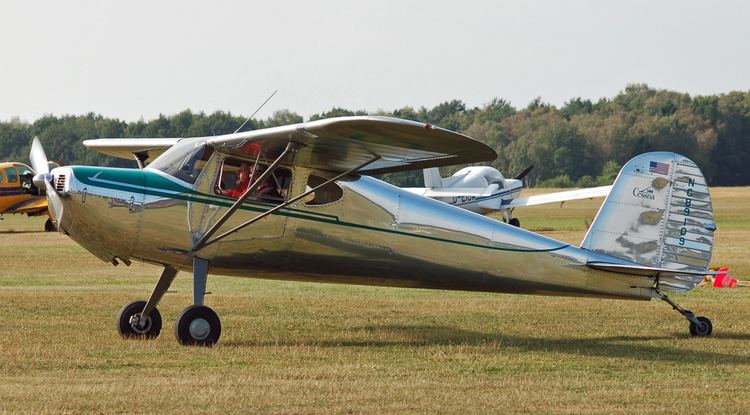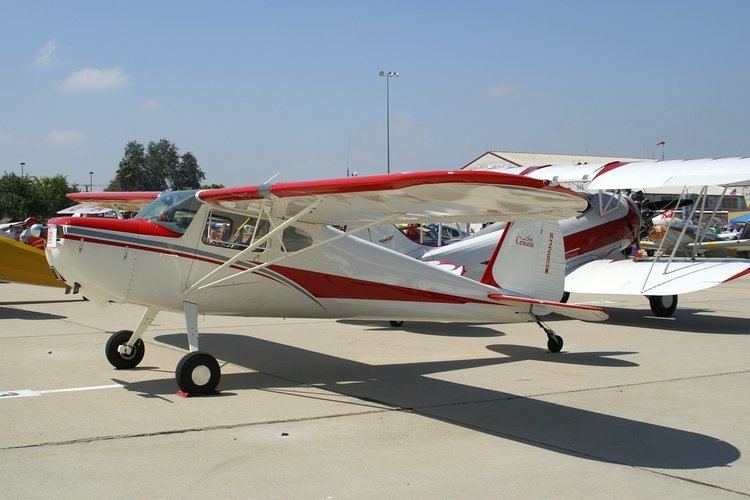Cruise speed 169 km/h Range 724 km Weight 404 kg Engine type Continental O-190 | Wingspan 10 m Top speed 201 km/h Unit cost 3,495–3,495 USD (1946) | |
 | ||
The Cessna 120, 140, and 140A, are single-engine, two-seat, conventional landing gear (tailwheel), light general aviation aircraft that were first produced in 1946, immediately following the end of World War II. Production ended in 1951, and was succeeded in 1959 by the Cessna 150, a similar two-seat trainer which introduced tricycle gear. Combined production of both aircraft was 7,664 units in five years.
Contents
- Cessna 140 s at oshkosh
- Cessna 140
- Cessna 120
- Cessna 140A
- Modifications
- Specifications Cessna 140
- References

Cessna 140 s at oshkosh
Cessna 140

The Cessna 140 was originally equipped with a Continental C-85-12 or C-85-12F horizontally opposed, air-cooled, four-cylinder piston engine of 85 hp (63 kW). The Continental C-90-12F or C-90-14F of 90 hp (67 kW) was optional, as was the 108 hp (81 kW) Lycoming O-235-C1 engine, an aftermarket installation authorized in the type certificate. This model had a metal fuselage and fabric wings with metal control surfaces. The larger Cessna 170 was a four-seat 140 with a more powerful engine.
Cessna 120

The Cessna 120 was an economy version of the 140 produced at the same time. It had the same engine as the 140, but lacked wing flaps. The rear-cabin "D" side windows and electrical system (radios, lights, battery and starter) were optional. A 120 outfitted with every factory option would be nearly equivalent to a 140, but the International Cessna 120/140 Association believes that no 120s were originally built this way. Despite this, many decades' worth of owner-added options have rendered many 120s almost indistinguishable from a 140 aside from the absence of wing flaps. The 120 was dropped from production upon introduction of the 140A in 1949.
Cessna 140A

In 1949, Cessna introduced the 140A, a new variant with aluminum-covered wings and single wing struts instead of the fabric wing covering, dual "V" struts, and jury struts fitted on earlier models. Standard engines were the Continental C-90-12F or C-90-14F of 90 hp (67 kW), with the 85 hp (63 kW) Continental C-85-12, C-85-12F, or C-85-14F engines optional. The spring-steel gear had been swept 3 in (8 cm) forward on 120 and 140 models in late 1947 so wheel extenders were no longer necessary to counter nose-over tendencies during heavy application of brakes; all 140A models had the improved gear legs. Despite these improvements, sales of the 140 lineup faltered, and the 140A comprised only seven percent of overall 120/140 production.
Modifications
Common modifications to the Cessna 120 and 140 include:

Specifications (Cessna 140)
Data from The Complete Guide to the Single-Engine Cessnas, AOPA Pilot, and Aircraft Specification No. A-768.
General characteristics
Performance
